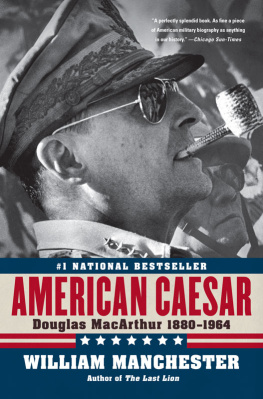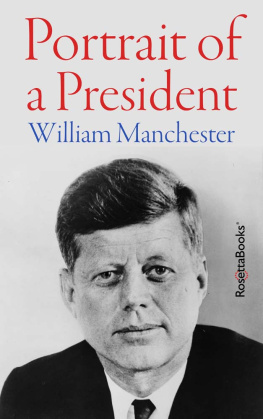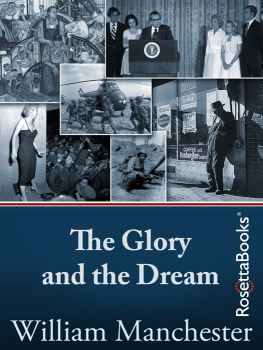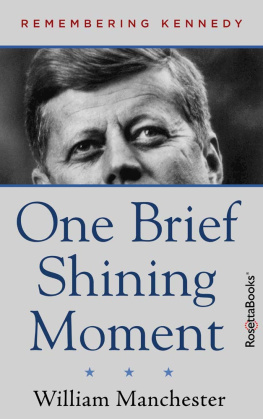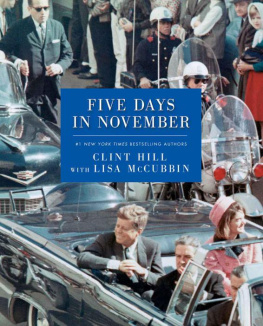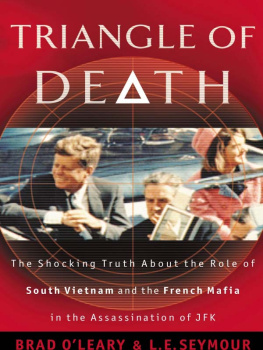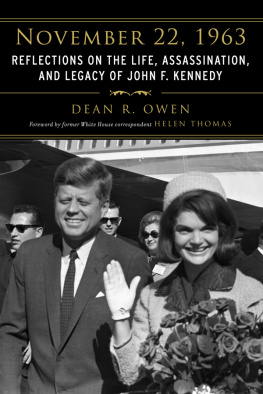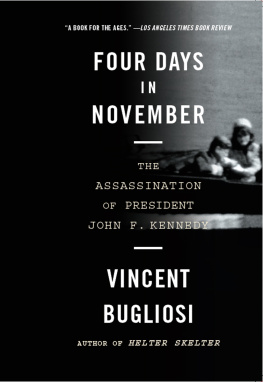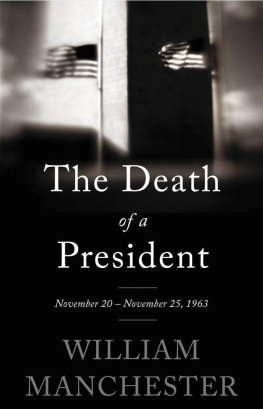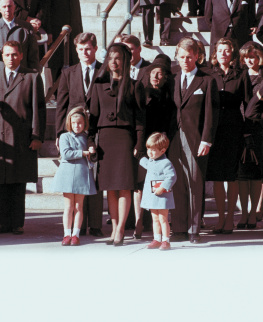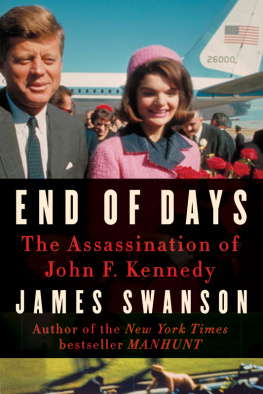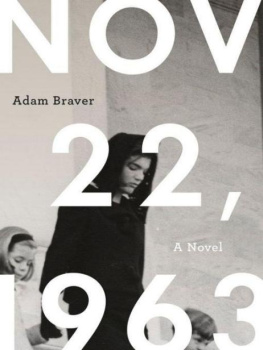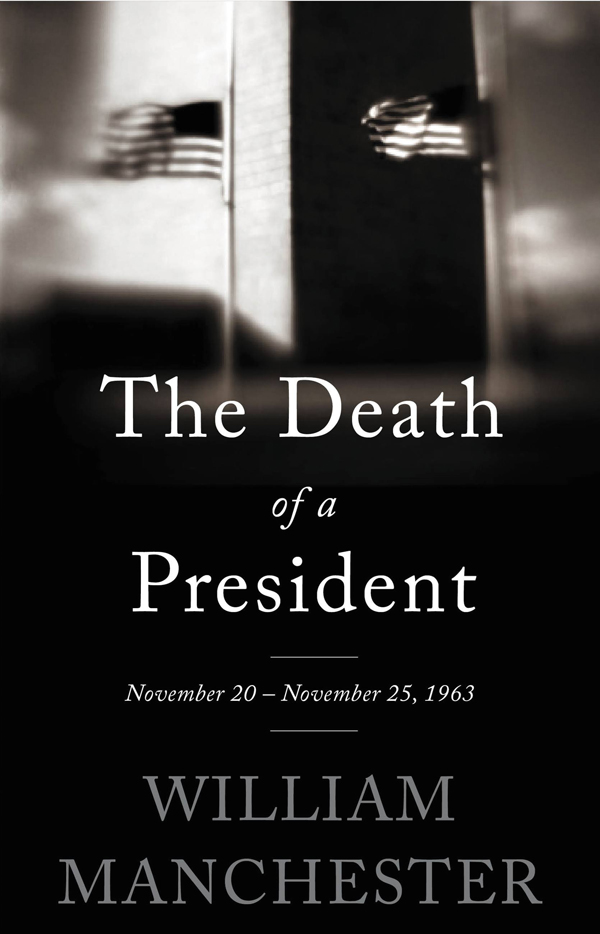
In accordance with the U.S. Copyright Act of 1976, the scanning, uploading, and electronic sharing of any part of this book without the permission of the publisher constitute unlawful piracy and theft of the authors intellectual property. If you would like to use material from the book (other than for review purposes), prior written permission must be obtained by contacting the publisher at permissions@hbgusa.com. Thank you for your support of the authors rights.
Thank you for buying this ebook, published by Hachette Digital.
To receive special offers, bonus content, and news about our latest ebooks and apps, sign up for our newsletters.
Sign Up
Or visit us at hachettebookgroup.com/newsletters
For more about this book and author, visit Bookish.com.
Copyright 1967 by William Manchester, renewed 1995 by William Manchester
Cover design by Mario J. Pulice
Cover photograph by Todd Korol/Getty Images
All rights reserved. In accordance with the U.S. Copyright Act of 1976, the scanning, uploading, and electronic sharing of any part of this book without the permission of the publisher constitute unlawful piracy and theft of the authors intellectual property. If you would like to use material from the book (other than for review purposes), prior written permission must be obtained by contacting the publisher at permissions@hbgusa.com. Thank you for your support of the authors rights.
Little, Brown and Company
Hachette Book Group
237 Park Avenue, New York, NY 10017
littlebrown.com
twitter.com/littlebrown
facebook.com/littlebrownandcompany
First ebook edition: October 2013
Originally published in hardcover by Harper & Row, 1967
Little, Brown and Company is an imprint of Hachette Book Group, Inc. The Little, Brown name and logo are trademarks of Hachette Book Group, Inc.
The publisher is not responsible for websites (or their content) that are not owned by the publisher.
The lines of verse appearing are from The Hollow Men by T. S. Eliot from Collected Poems 19091962, published by Harcourt, Brace & World, Inc., New York, and Faber & Faber, Ltd., London. Reprinted by permission.
The lines of verse quoted are from a poem composed by the Irish poet D. L. Kelleher for the christening of Dr. Thomas Kiernans son. Grateful acknowledgment is made to Dr. Kiernan for permission to reprint.
The lines of verse appearing are from To an Athlete Dying Young from A Shropshire LadAuthorized Editionfrom The Collected Poems of A. E. Housman. Copyright 1939, 1940, 1959 by Holt, Rinehart and Winston, Inc. Also reprinted by permission of the Society of Authors as the literary representative of the Estate of the late A. E. Housman, and Messrs. Jonathan Cape, Ltd., publishers of A. E. Housmans Collected Poems.
ISBN 978-0-316-37072-1
Disturber of the Peace (1951)
The City of Anger (1953)
Shadow of the Monsoon (1956)
Beard the Lion (1958)
A Rockefeller Family Portrait (1959)
The Long Gainer (1961)
Portrait of a President (1962)
The Death of a President (1967)
The Arms of Krupp (l968)
The Glory and the Dream (1974)
Controversy (1976)
American Caesar (1978)
Goodbye, Darkness (1980)
The Last Lion: Visions of Glory (1983)
One Brief Shining Moment (1983)
In Our Time (1985)
The Last Lion: Alone (1988)
A World Lit Only by Fire (1992)
The Last Lion: Defender of the Realm (with Paul Reid) (2012)

For all
in whose hearts
he still lives
a watchman of honor
who never sleeps
On February 5, 1964, Mrs. John F. Kennedy suggested that I write an account of the tragic and historic events in Texas and Washington ten weeks earlier. That is the first breath. The second, which must quickly follow, is that neither Mrs. Kennedy nor anyone else is in any way answerable for my subsequent research or this narrative based upon it. My relationships with all the principal figures were entirely professional. I received no financial assistance from the Kennedy family. I was on no government payroll. No one tried to lead me, and I believe every reader, including those who were closest to the late President, will find much here that is new and some, perhaps, that is disturbing. That is my responsibility. Mrs. Kennedy asked me but one question. Before our first taping session she said, Are you just going to put down all the facts, who ate what for breakfast and all that, or are you going to put yourself in the book, too? I replied that I didnt see how I could very well keep myself out of it. Good, she said emphatically. And so I am here, weighing evidence and forming judgments. At times you may find my presence exasperating. You may decide in the end that I have been a poor judge. But you may not conclude that I have served as anyones amanuensis. If you doubt me you may as well stop at the end of this paragraph.
Actually, I discovered, the Kennedy family had not been eager to have any book written about the Presidents death. Understandably they needed time to heal. But shortly after the burial in Arlington various writers solicited their cooperation in such a project. It soon became apparent that volumes would appear in spite of their wishes. Under these circumstances Jacqueline Kennedy resolved that there should be one complete, accurate account. I had not been among those who had approached her. (I had been living in the Ruhr, and was writing German history.) At that time I had not even met her. However, her husband had told her about me, and she had read a magazine profile I published about him the year before his death. Robert Kennedy also remembered my acquaintance with his brother. After consultation other members of the family agreed with Mrs. Kennedy that, in light of the fact that apocryphal versions of those days were already in press, it would be wise to have a book written by an author whom the President had known. It was further decided that the work should be based upon material gathered while memories were still fresh. Hence the invitation to me.
My first two calls were upon Bill Moyers at the White House and Chief Justice Earl Warren. It was essential that the new President, whose confidence Moyers deservedly enjoyed, know what I proposed to do. It was equally imperative that the Presidential Commission which the Chief Justice headed understand the exact nature of my inquiry. The Chief Justice was unfailingly polite to me, and he recognized that while the lines of the two investigations might occasionally intersect, they certainly did not run parallel to one another. The Commission was conducting a criminal probe. I was exploring the full sweep of events during what were, in some respects, the most extraordinary hours in the history of our country. They were focusing upon the assassin of a President, I upon the Presidency itself.
During the next six months we exchanged some confidences, and inevitably we ran across each others tracks. Sometimes I had been there first; I saw John McCone a month before the Commission did, and I interviewed Mrs. Johnson three weeks before she sent her statement to Earl Warren. On the other hand, I did not begin my Texas trips until the last member of the Commission had left Dallas, and its report to President Johnson was on the bookstore counters long before I scheduled the first of my formal interviews with Secret Service agents. By then I was alone in the field. I was to remain there until early 1966, when the trail began to grow cold. It therefore seems fair to assume that should any new studies of this subject appear in the near future, they must be largely based upon the Commissions work, mine, or both. Had any other major investigator been around, I certainly would have heard the echo of his footsteps.
Next page

